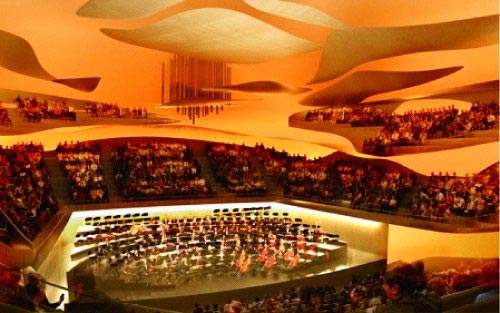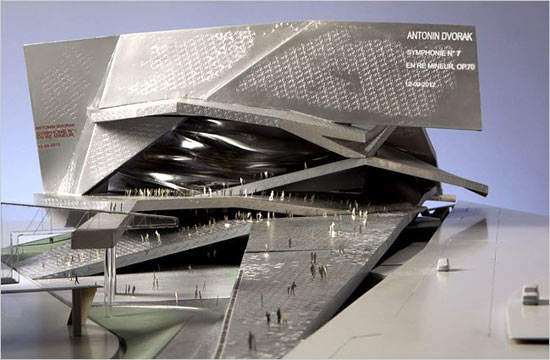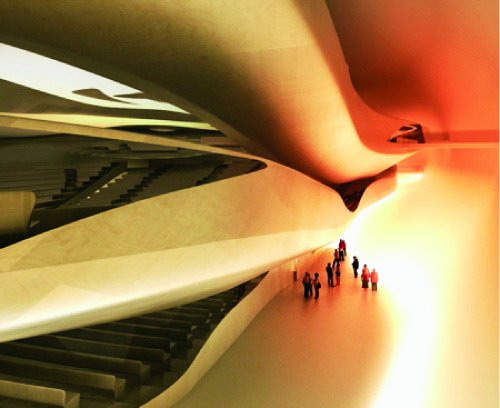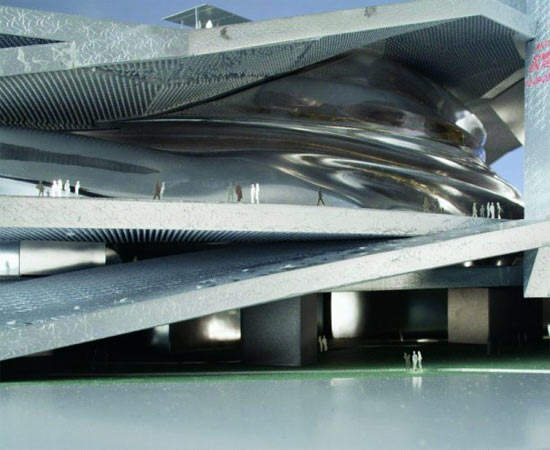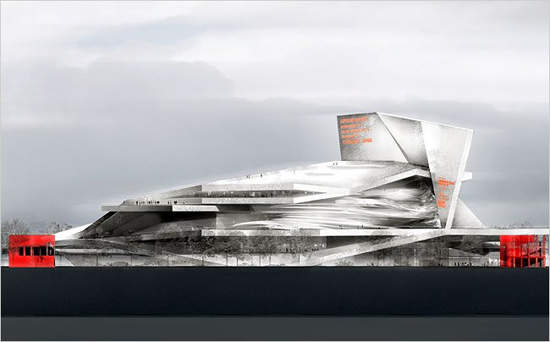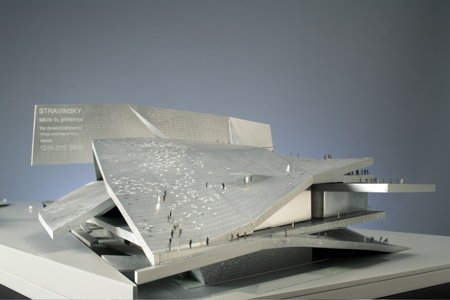In April 2007, celebrated French architect Jean Nouvel was asked to undertake the prestigious Philharmonic Hall project in Paris, France. The new building is one of the great landmarks in a city already full of culture and architectural achievement.
With this project, Nouvel can claim the crowning glory of his career, as a French architect being chosen to design the first large-size concert hall built in Paris since 1927 (Salle Playel).
The design was chosen by international competition and fills a small cultural void in Paris since the city previously had no dedicated symphony hall.
The architect is certainly not about to disappoint. The new state-of-the-art music complex is the home of the Orchestre de Paris and hosts many famous musicians.
Philharmonie De Paris design
The $260m (€200m) hall is to be known as the Philharmonie de Paris and was built on a site in the north-eastern neighbourhood of La Villette beside the existing Cité de la Musique.
The 2,400-seat hall was opened in January 2015 and is Nouvel’s third large project in Paris. He has already been involved with the Institut du Monde Arabe and the Musée du Quai Branly.
The acoustics of the building are paramount and Nouvel worked with the Australian firm Marshall Day Acoustics and Yasuhisa Toyota of Nagata Acoustics of Japan.
Details of the Symphony Hall
As well as providing a contemporary performance space, the Philharmonie de Paris is the first dedicated professional music facility in the city, with offices, a library and exhibition space.
The building has a floor space of approximately 20,000m² and includes an organic flowing asymmetric design, featuring annexes, rehearsal spaces, an educational wing, a library, and a restaurant, as well as the necessary infrastructure for the transport of instruments and a car park.
The aluminium-clad exterior resembles a mass of crumpled metal slabs, while its interior contains bulging, sinuous organic shapes. The hall has a ‘vineyard-style’ seating arrangement similar to that of Walt Disney Hall in Los Angeles. So the audience is arrayed on raised terraces surrounding an orchestra platform. The vineyard model also allows the public to occupy seats behind the orchestra when they are not needed for a choir.
The design of the exterior was limited only by a maximum height and the size of the plot, acoustics played a role in defining strict requirements for the auditorium so that no member of the audience should be more than 100ft from the conductor.
At the design’s unveiling at the Cité de la Musique, Nouvel said: “The novelty of the auditorium is to ‘suspend’ balconies so they will be attached to the building by access passages in a way that allows sound waves to circulate around and behind them. The idea is that the audience will be in the middle of the music.”
Suspended over the auditorium is a series of acoustical canopies, resembling flat clouds that can be lowered and raised to suit the orchestra and programme. Adjustments will be needed, for concerts of different music such as jazz and world music, which were also planned for the hall.
Design competition and exclusion
The Nouvel design was chosen from six finalists that included Francis Soler, Christian de Portzamparc, Zaha Hadid, Coop Himme(l)bau and MRDV. The first phase of the competition attracted 98 entries.
Architects who submitted designs for the hall were prevented from participating in the city’s other major architectural competition to design a two-acre superstructure that will be located at the entrance to the enormous underground Les Halles mall and transit centre.
The Paris Mayor’s office explained: “Many of the international architects who wanted to be part of the Les Halles project, were chosen for the Philharmonie de Paris competition. Because the two of them are quite difficult projects, we had the idea that they wouldn’t have the time necessary to work on both of them at the same time.”
Former French Prime Minister Dominique de Villepin said: “Nouvel’s project will be one of the powerful new architectural gestures that Paris needs.”
Jean Nouvel has already been involved in at least three other concert halls, including one in Lucerne, Switzerland in 1998.
Requirements for a Parisian concert hall
Paris has long required the use of a dedicated concert hall. Conductor John Nelson has already complained that his Ensemble Orchestral de Paris is forced to rehearse in two or three different halls, and only permitted a single rehearsal in the busy Théâtre des Champs-Elysées on the morning of the concerts. Other orchestras have also had to face similar problems.
Only the recently refurbished Salle Pleyel, which is home to the Orchestre de Paris, was especially designed for concert music.

